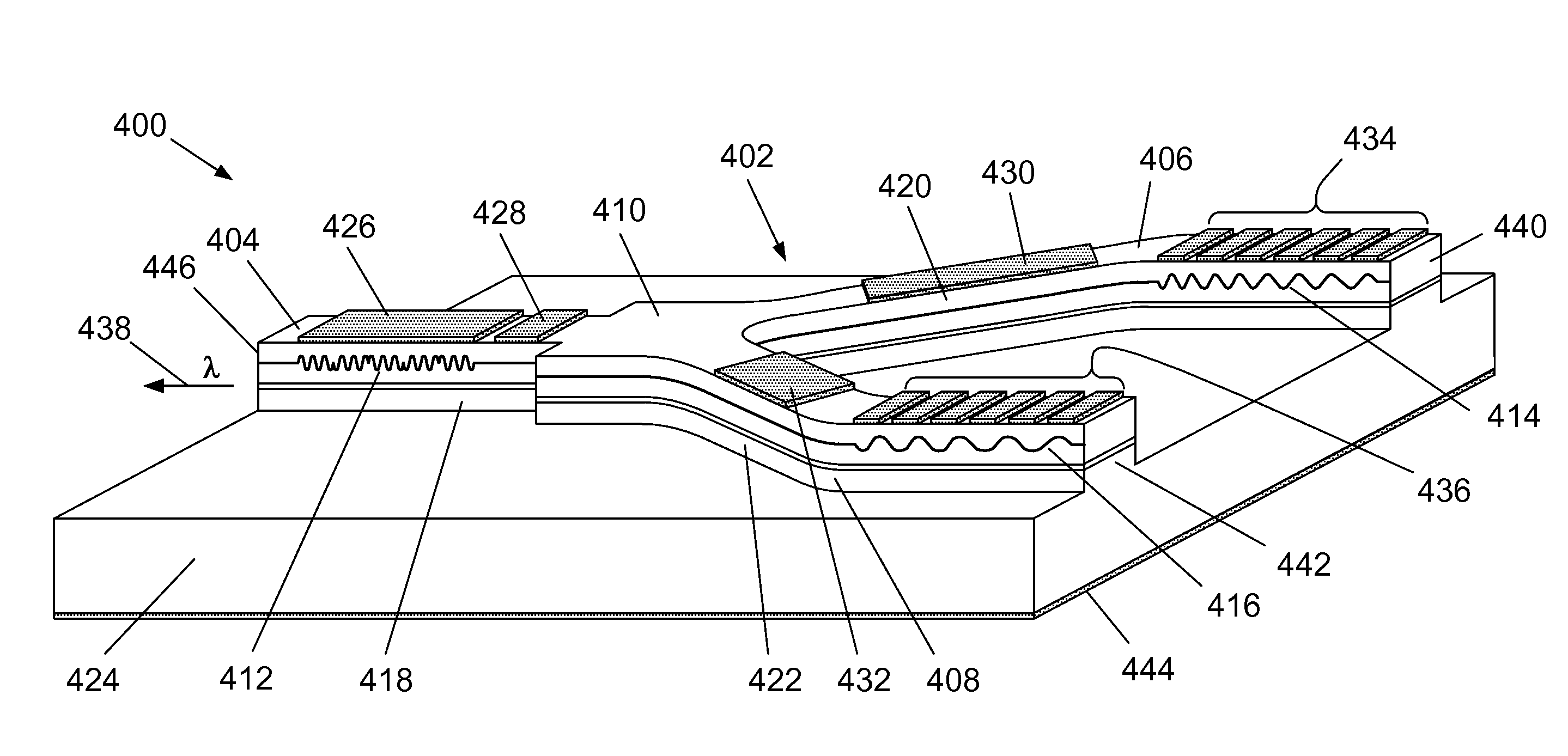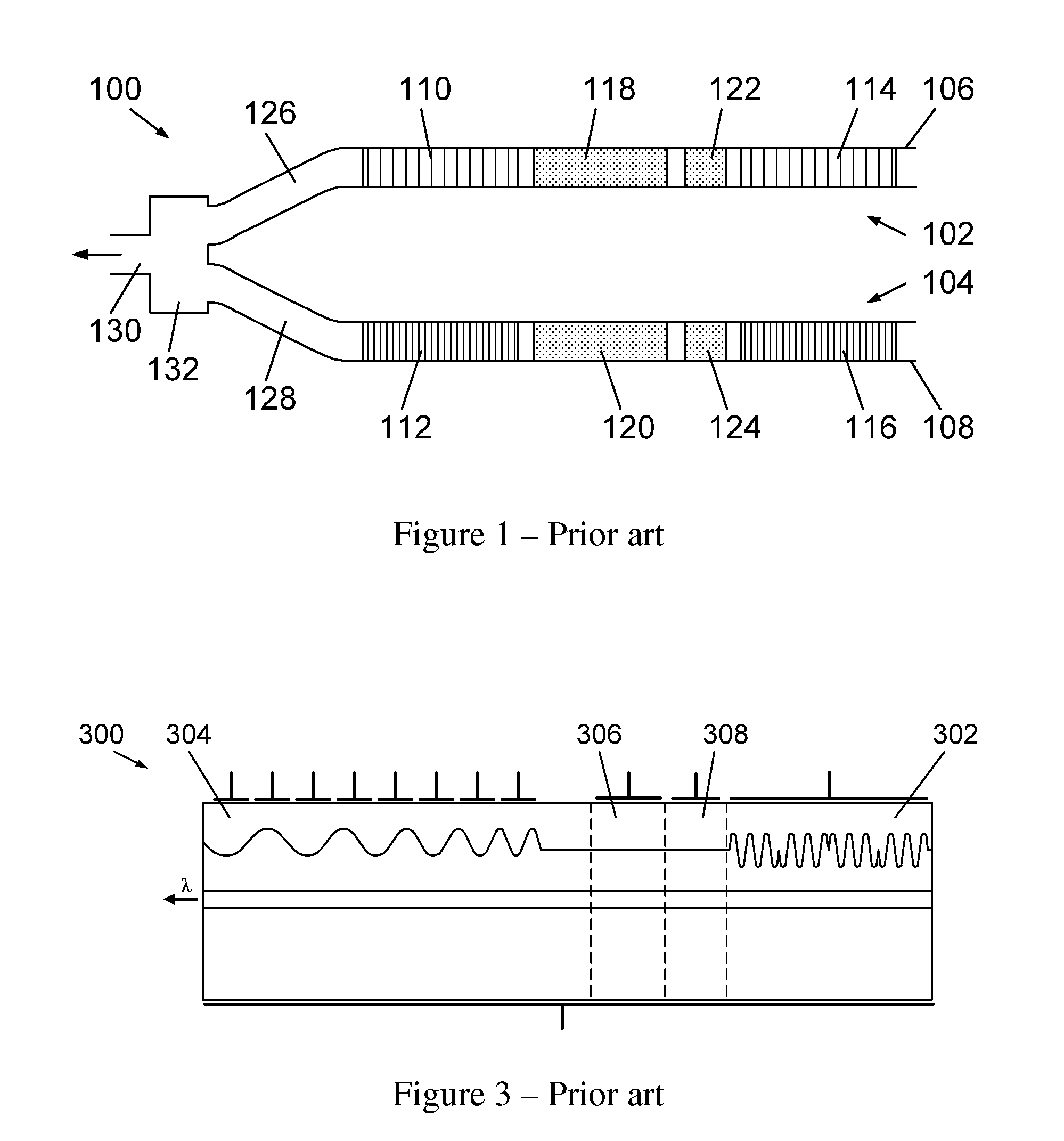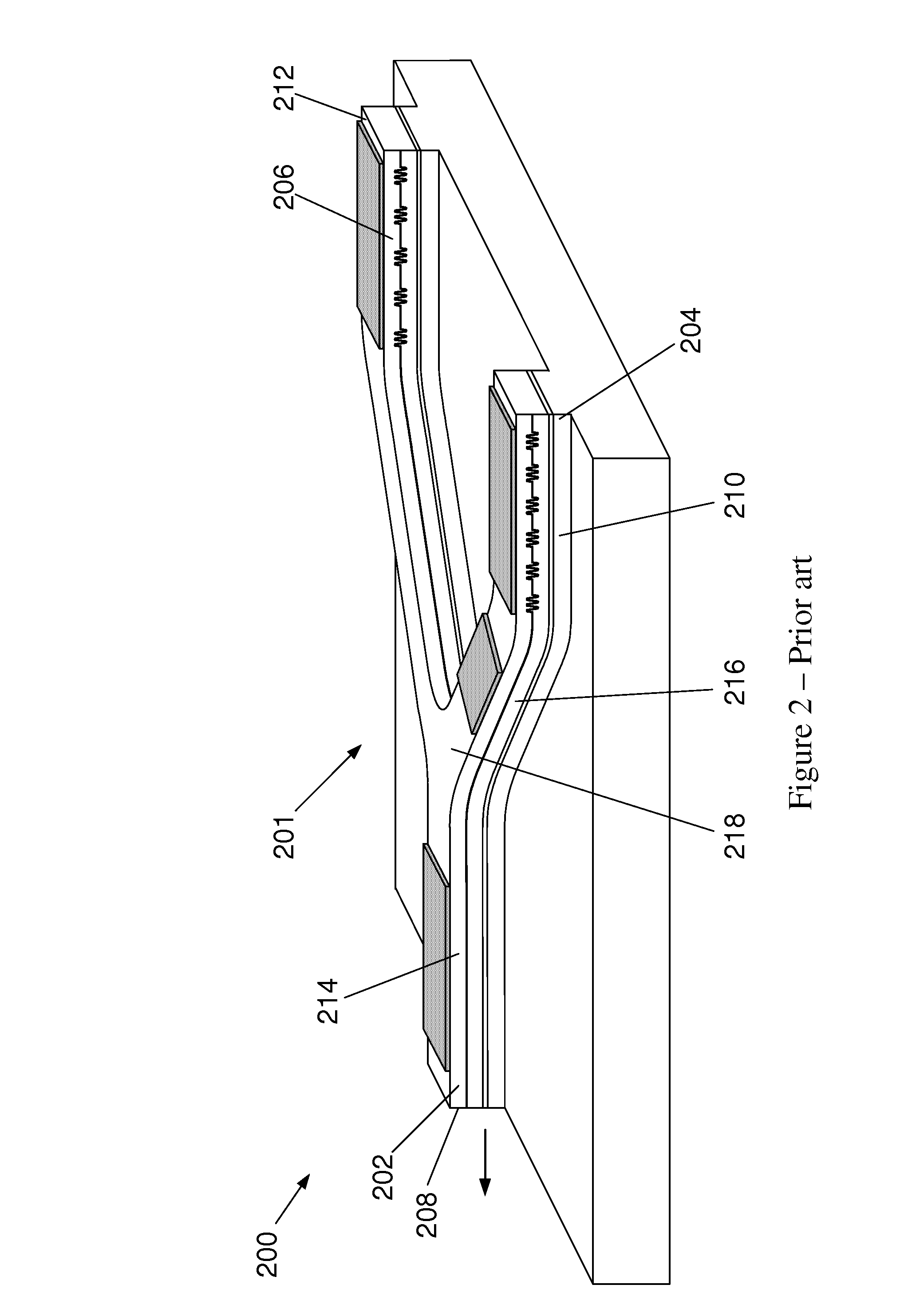Branched waveguide multisection dbr semiconductor laser
a semiconductor laser and waveguide technology, applied in the direction of semiconductor lasers, optical resonators, optical elements, etc., can solve the problems of large size and expensive installation, significant redundancy, and not desirable within the size limited optical telecommunications packag
- Summary
- Abstract
- Description
- Claims
- Application Information
AI Technical Summary
Benefits of technology
Problems solved by technology
Method used
Image
Examples
Embodiment Construction
[0045]FIG. 4 shows schematically a first embodiment of the present invention. A semiconductor laser 400 has a Y-shaped, branched optical waveguide 402. The illustrated optical waveguide is a ridge waveguide, although other designs of waveguide may also be suitable and will be known to those skilled in the art. The optical waveguide 402 comprises a “stem” waveguide section 404, a first “branch” waveguide section 406 and a second “branch” waveguide section 408. The first and second branch waveguide sections 406 and 408 are optically in parallel, and optically coupled to the stem waveguide section 404 by means of a 1×2 optical coupler 410. A stem optical reflector 412 is provided in the stem waveguide section 404, and is tunable. First and second tunable branch optical reflectors 414, 416 are respectively disposed on the first branch and second branch waveguide sections 404, 406 and 408.
[0046]The optical reflectors 412, 414, 416 are distributed Bragg reflectors (DBRs), comprising grati...
PUM
 Login to View More
Login to View More Abstract
Description
Claims
Application Information
 Login to View More
Login to View More - R&D
- Intellectual Property
- Life Sciences
- Materials
- Tech Scout
- Unparalleled Data Quality
- Higher Quality Content
- 60% Fewer Hallucinations
Browse by: Latest US Patents, China's latest patents, Technical Efficacy Thesaurus, Application Domain, Technology Topic, Popular Technical Reports.
© 2025 PatSnap. All rights reserved.Legal|Privacy policy|Modern Slavery Act Transparency Statement|Sitemap|About US| Contact US: help@patsnap.com



